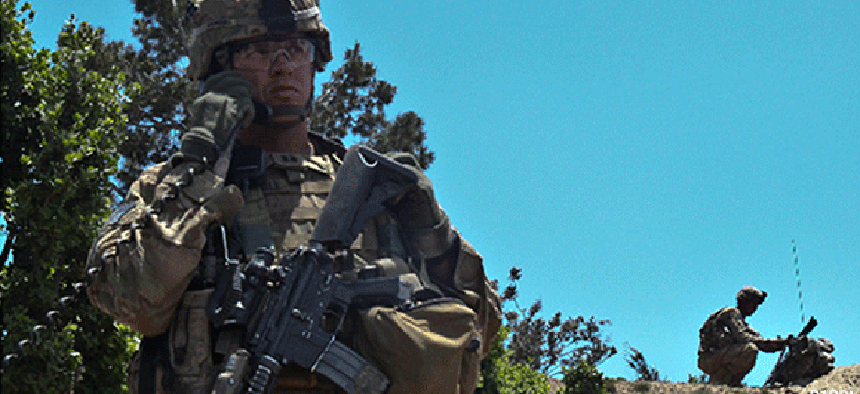DARPA puts out call to boost wireless security

The Wireless Network Defense program could borrow tactics from credit card and online buying protections to ensure trustworthiness.
Military members in remote areas rely on wireless devices not only to access the network, but often as a relay point for other devices. For this to work properly, the nodes in question have to accurately and securely share information about themselves.
This is like walking a tightrope: if too much information is passed, the network is not secure, and if too little is passed, the devices won’t interconnect properly.
To help work on this problem, the Defense Advanced Research Projects Agency has started the Wireless Network Defense program to develop technology to improve the robustness of wireless networks without having to go back and develop entirely new radios devices or wave forms.
“Current security efforts focus on individual radios or nodes, rather than the network, so a single misconfigured or compromised radio could debilitate an entire network,” Wayne Phoel, DARPA program manager, said in a statement. “We need to change how we control wireless networks by developing a network-based solution for current and future systems that acknowledges there will be bad nodes and enables the network to operate around them.”
A key objective of the program is to develop protocols that determine trustworthiness of neighboring wireless nodes and allow the network to automatically adapt to problems. So if an unsecured, faulty or otherwise suspicious node shows up (or one of the existing nodes becomes unsecure), the rest of the neighborhood will all know about it and be able to take appropriate action.
Part of the inspiration for the program comes from the indicators that credit card companies use to flag potential misuse of someone’s card or from the seller ratings used on social sites where people buy goods from one other, Phoel said.
As reported in the DOD’s “Armed With Science” blog, the initiative could only end up improving both productivity and chance of mission success as use of military wireless systems by military personnel increases.
NEXT STORY: Printer analyzer can keep energy phantoms at bay





